Your fishing line must match your fishing rod and reel and be rigged properly, if you hope to catch fish on your next fishing trip. Unfortunately, you cannot memorize all the different rigging methods at once. Start with the most common ones and broaden your knowledge later on.
To catch the fish of your dreams, you must come fully prepared and bring the right fishing gear. There is a lot to consider. Yet, the choice of the fishing line and rigging method should be on top of your list.
The right choice of fishing line guarantees your setup is as effective as it can be. Add a well-tied, reliable knot to hold everything together, and you have a combo that will not let you down when you are on the water.
Depending on the equipment you are using, there are a number of different rigging methods. All rigs share some common characteristics, but each has something that makes them unique and the best choice for a particular fishing situation. So, keep strolling to master the basics of line setup.
How To Select Your Fishing Line?

The fishing line connects your bait or lures with your fishing rod and reel. It serves to cast or throw your “offering” to the hungry fish and present it in the best way. Once you get a strike, your line enables you to reel the hooked fish in.
As you can see, the fishing line is a critical factor in your fishing success. Therefore, you must make sure you are well-informed before you choose your line and start setting it up. Most of all, you must consider its stretchiness, castability, strength, and memory. Let’s discuss this in more detail so that you can identify the best fishing line for your needs!
What To Consider When Choosing A Fishing Line?
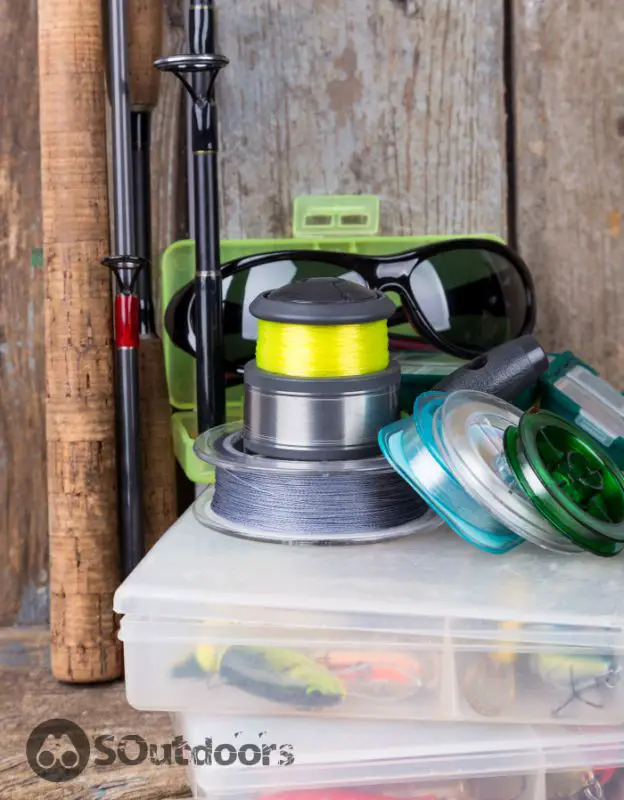
Many fishers place all their attention on their fishing rods and reels and forget how important the choice of fishing line is. I will help you avoid making the same mistake.
Type Of Line
There are three different types of fishing line depending on the material they are made of:
- Monofilament
- Fluorocarbon
- Braided
Monofilament Fishing Line
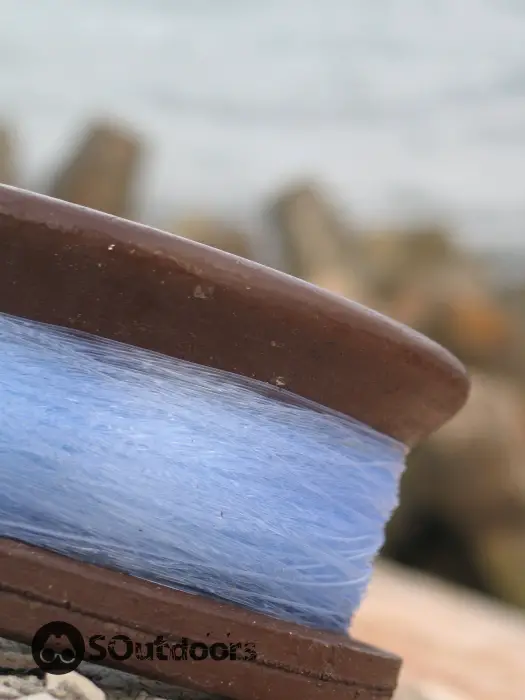
Monofilament line is made in one continuous filament without any twisting. It is thus smooth and moderately stretchy. Mono line can be clear or colored. Colored is more visible above the water while still appearing natural to the fish.
There is also improved thermal filament line that is made by bonding tiny fibers together. It has a smaller diameter than regular mono line in the same pound test category. If you want to try a thermal filament line, you’ll have to spend more time looking for it since it is not as readily available as other types of line. You’ll also have to pay extra.
A monofilament line is best combined with a spinning or baitcasting fishing rod and a spinning or a baitcasting reel. Anglers usually use it for inshore freshwater fishing. It is an excellent choice when targeting trout or salmon.
It does not mean that you cannot use mono for saltwater fishing. Saltwater fishermen often use this type of line to catch a small tuna, kingfish, or snapper.
Pros
- Affordable and easy to get a hold of
- Beginner-friendly, as its stretchiness helps cushion shocks and prevents line breakage
- Abrasion-resistant
- Easy to spool and tie in a reliable knot
- Comes in an array of different colors
Cons
- Not suitable for targeting big and strong fish
- Deteriorates if left in direct sunlight
- More visible in the water than other types of line
- Not as sensitive as other types of line
- High line memory
Braided Fishing Line
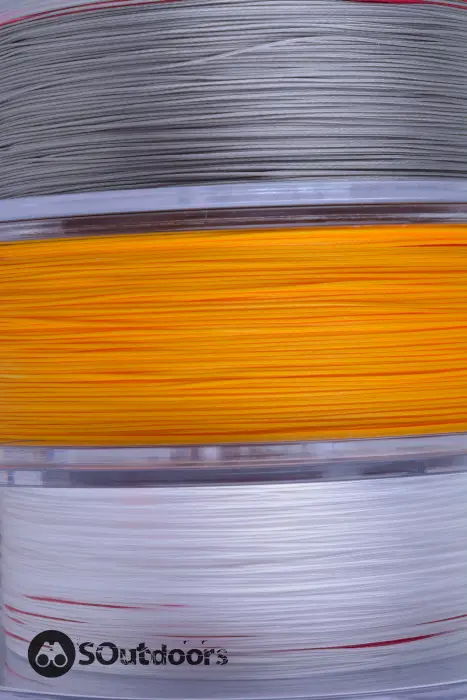
Braided fishing line is very popular among anglers targeting larger fish or fishing in thick cover. It is made from multiple synthetic nylon or Dacron fibers. As a result, braided line is typically thicker and stronger than mono line.
A braid does not stretch at all. Consequently, you can feel even the slightest movement on your hook and react in a timely manner.
Braid is the primary choice among saltwater anglers. It is ideal for offshore trolling and targeting sea monsters such as big tuna, marlin, kingfishers, or a shark. When targeting soft-mouthed fish such as salmon, you might want to opt for some other type of line.
Pros
- Stronger than mono line of the same diameter
- Smaller diameter enables you to spool more line onto your fishing reel
- Excellent casting distance thanks to no line memory
- Fast sinking
- Does not deteriorate when exposed to sunlight
- Less visible in the water
- Zero stretch delivers extra sensitivity
Cons
- Difficult to cut through, so make sure you have fishing pliers in your tackle box
- Knots do not hold too well due to the line being a bit slippery
- Not as abrasion-resistant as mono
- Not the best choice for a light rod as it can weigh it down
- Pricier than mono
Fluorocarbon Fishing Line
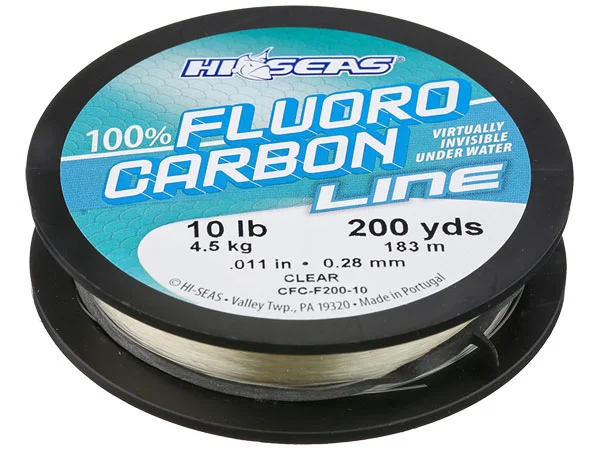
A fluorocarbon line is made from dense materials making it highly abrasion-resistant and durable. It stretches when exposed to a lot of pressure and is almost undetectable in the water.
Fluorocarbon line is predominantly used in situations when you want your bait or lure to sink fast. Therefore, it is ideal for bottom fishing, jigging, and drop shot fishing.
You can combine fluorocarbon line with either a baitcaster or a spinning reel. It is suitable for most fish species as long as you match the weight of the fish you are targeting with the weight of your line.
Pros
- Practically invisible in water – ideal for fishing in clear water
- Superb abrasion resistance
- Durability and longevity
- Slight stretchiness delivers high shock strength without compromising your precision
- Extreme sensitivity guarantees bite detection – even when the line is in slack
Cons
- High line memory often causes tangles
- Knots are not as reliable as the ones tied with mono line
- Requires some knowledge and experience
- Pricey
Castability
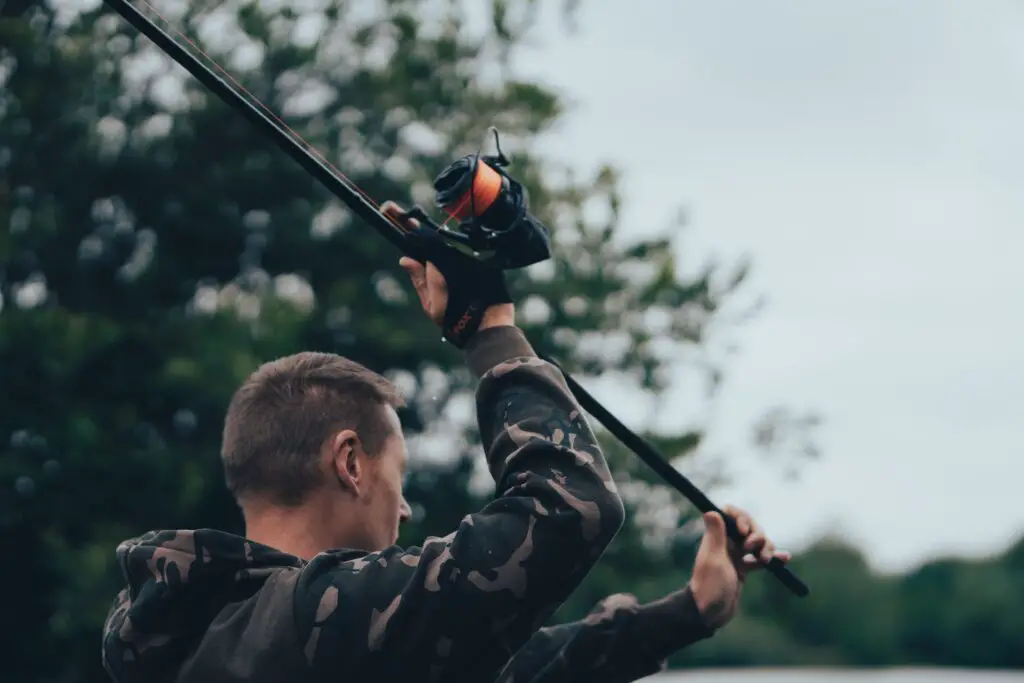
If you want to be able to cast your bait or lure as far as you want without compromising your precision, your line must come off the reel easily. So, choose a smooth, light line, preferably with little or no memory. That will help you improve your casting distance and prevent tangles.
Stretchiness
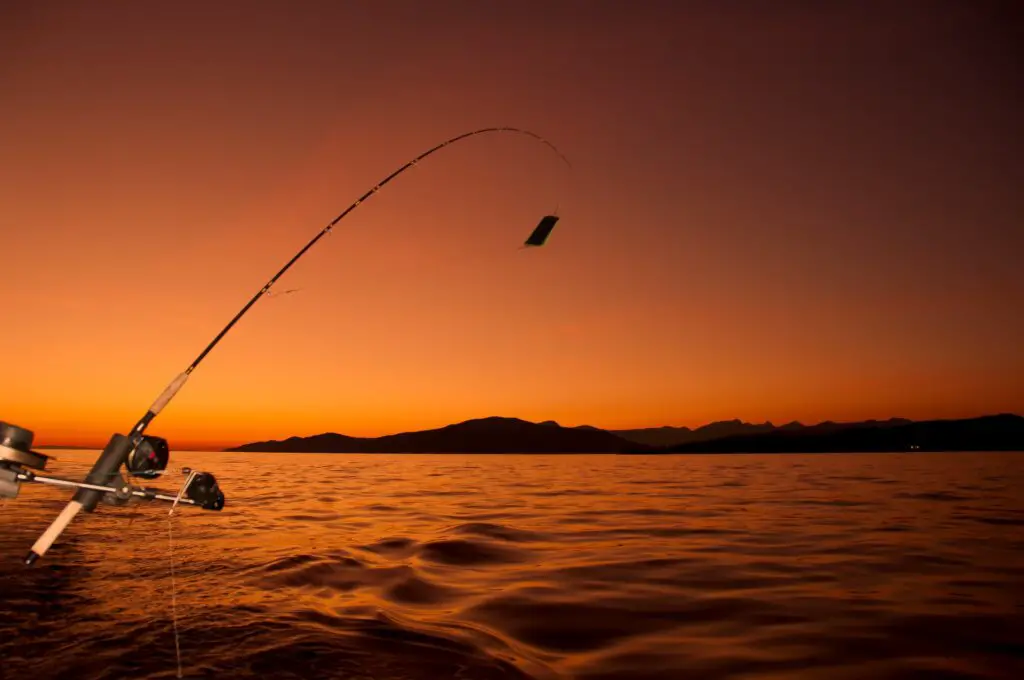
The less your line stretches, the more sensitive it is and the better your chances of feeling the strike and reacting before the fish escapes. For this reason, many fishermen prefer using a line with no stretch at all.
However, stretchiness is not always a bad thing. For example, when trolling or targeting soft-mouthed fish, stretch can help an angler set the hook and reel the fish in successfully. Also, a shock-absorbing, stretchy line can help inexperienced anglers avoid line breakage.
Memory
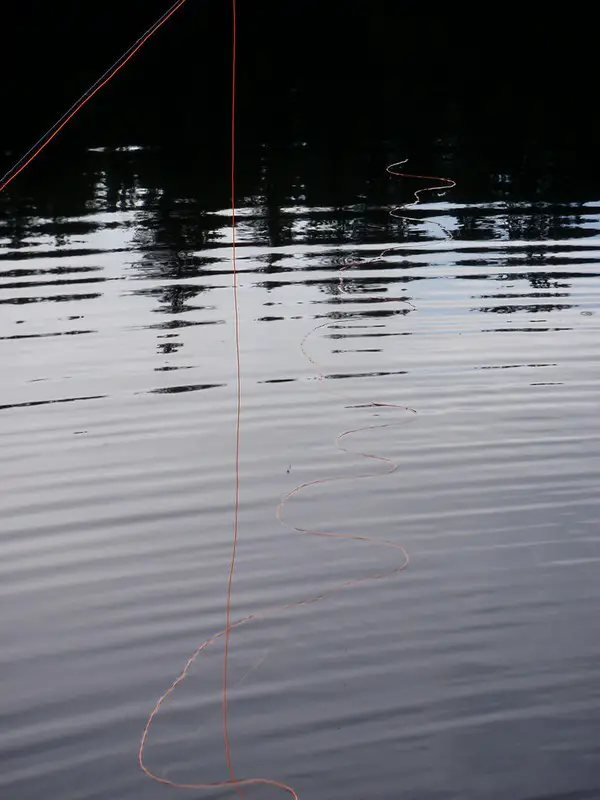
The less memory fishing lines have, the better. Why? If it has no memory, the line will not retain the shape of the spool. Therefore, it will come off straight instead of in loops. This enables the angler to cast the bait further, thanks to less friction and line twists.
Strength
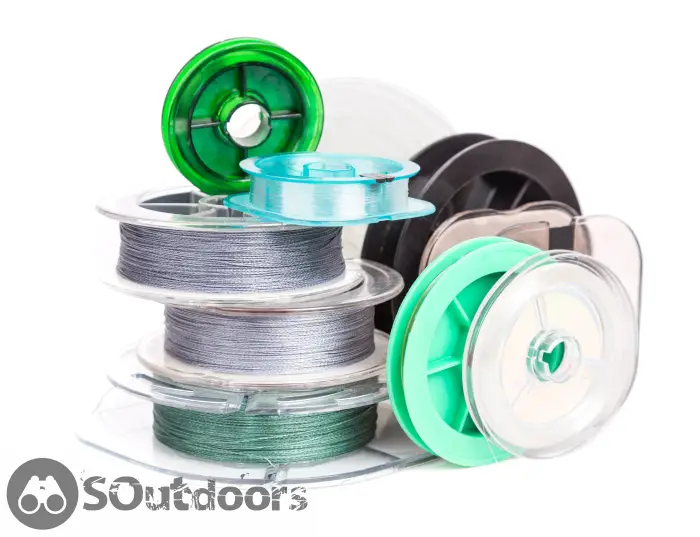
The fishing line strength (or test) is measured in pounds. When choosing a line for your fishing adventure, you should try to match its strength to your fishing rod and the targeted fish.
If you already have your line and want to find the right fishing rod, the process is simple, regardless of how vast the choice of fishing rods in your local tackle shop is. Simply read the markings on the surface of the fishing rod, which clearly state what line strength it is designed for.
The following table can help you match your line weight to the fish you are trying to catch:
| Test | Fish Species |
|---|---|
| 2 lb to 4 lb | Small freshwater fish, such as trout |
| 6 lb to 10 lb | Larger freshwater fish, such as largemouth bass, salmon, or bream |
| 12 lb to 20 lb | Smaller saltwater fish such as tuna, snapper, or kingfish |
| 30 lb and above | Big saltwater fish, such as monster tuna, marlin, and sharks |
Types Of Fishing Rigs To Set Up A Fishing Rod & Fishing Line
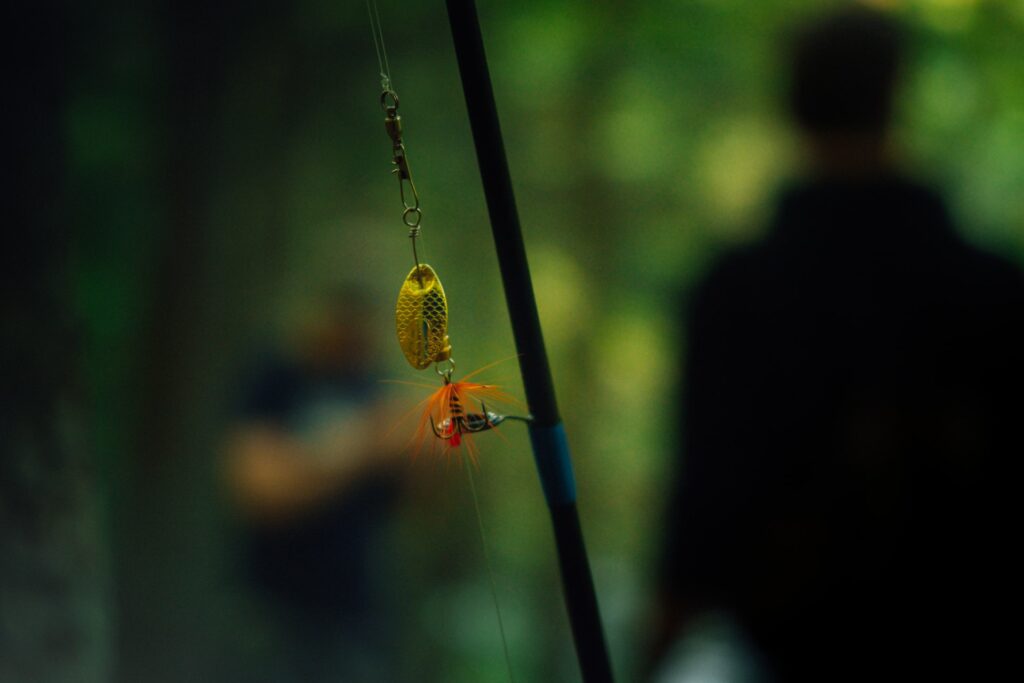
Knowing which rig works best for your fishing situation can be of great help when trying to set up a fishing pole for the first time. There are many different types of fishing rigs you can choose from, so it will take time and a bit of experience to make the right choice.
To learn how to set up the most common rigs I am about to introduce, you must prepare your fishing rod, fishing reel, the line you have chosen, and a few different hooks, swivels, and sinkers.
Are you ready? Let’s begin.
Basic Bobber Rig
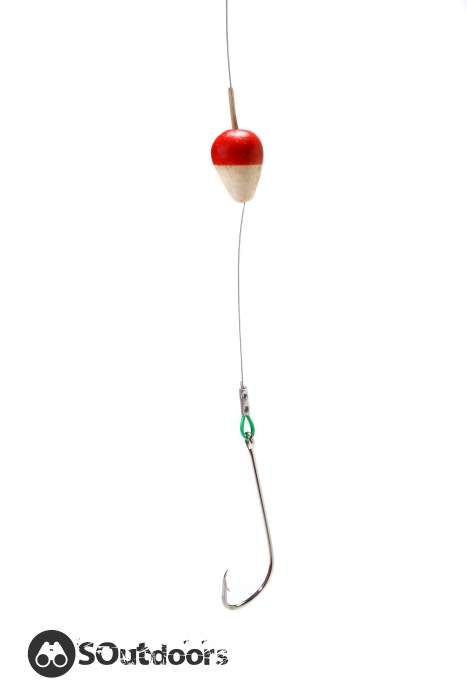
If you are a beginner, start with a simple slip-bobber rig. It is an excellent choice for still fishing. The bobber will let you know when you get a strike. Besides, the bobber enables you to make longer casts into deep water and suspend the bait just above the bottom.
You can use this rig to target small fish, such as panfish or perch, or larger ones, such as walleye or catfish.
How To Tie A Basic Bobber Rig
- Start by tying a fish hook to your main line. A basic #6 or #8 hook with a long shank will do just fine. I recommend using an Improved Clinch Knot.
- Clip a bobber at about the same distance from the fishing hook as the depth of the water you are planning to fish in (usually about 3 or 4 feet away).
- Attach one or two split shots to your main fishing line, at least three inches away from the hook. This will add enough heaviness to your line to bring your bait closer to the bottom. It will also prevent your line from getting swept away by strong currents. The stronger the current, the heavier your split shots should be.
- Bait your hook. Use the fish bait that matches the fish you are targeting, and pierce its thickest part. Bring enough fish baits to re-bait your hook a few times.
Extra Tip: If you choose to use a cork bobber, you must slide it onto the line prior to tying the hook.
Weedless Texas Rig
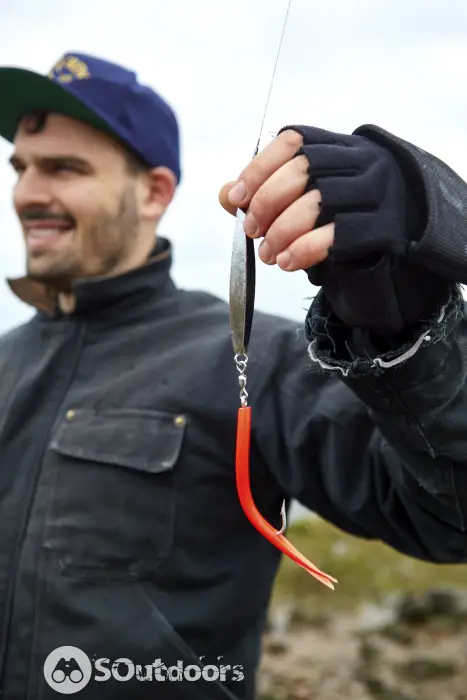
A weedless Texas rig can be retrieved through all types of cover and used in both deep and shallow water. It is perfect for targeting predators that hide in cover, waiting for their prey, such as bass. Use soft plastics as lures for best results.
How To Tie A Weedless Texas Rig
- Start by sliding the narrow end of the bullet sinker onto the end of your line (about 2–3 feet down). Grip the free end of the line to prevent the sinker from slipping off. Use a lighter weight if you fish in shallow water and want your lure to sink slowly, or a heavier weight to easily penetrate thick underwater vegetation.
- Use an Improved Clinch Knot to tie a 3/0 or 4/0 worm hook. Cut the excess line with fishing pliers.
- When baiting the hook, make sure it curves back into the body of your lure (the hook should have a D shape). In this way, you prevent the hook from getting caught up in underwater objects.
Extra Tip: When targeting thick cover, peg the sinkers on your fishing rods with a rubber band or bobber stop to secure them closer to your lure.
Carolina Rig
Carolina rig, or sliding sinker rig, is one of the best fishing rigs for deep-water fishing and bottom fishing. It is often used for drifting and slow-trolling. Some anglers call this popular rig a fish finder rig, too.
Carolina rig is highly versatile and used to fish from shore or a boat. It is a popular choice for lake fishing and sea fishing and can be used to target many different fish, including trout, catfish, flounder, and striped bass.
How To Tie A Carolina Rig
- Thread the main line through the egg sinker.
- Next, slide on the metal, plastic, or glass bead. The sinker and the bead will hit each other and create a sound that will help attract fish.
- Next, secure a barrel swivel to the end of the main fishing line. Use a reliable fishing knot, such as Uni Knot. The swivel enables the leader to spin freely on your main fishing line and prevents line breakage.
- Attach 6-12 inches of leader line (mono or fluorocarbon) to the barrel swivel. If you plan to target exceptionally large or aggressive fish, consider using a steel leader.
- Finally, tie a worm hook to the leader (with an Improved Clinch Knot), and attach an artificial bait, such as a jig or soft plastic lure, or a natural bait or live bait. Try to conceal the hook.
If you want to make sure you tie your Carolina rig properly, watch the video below:
3-Way Fishing Rig
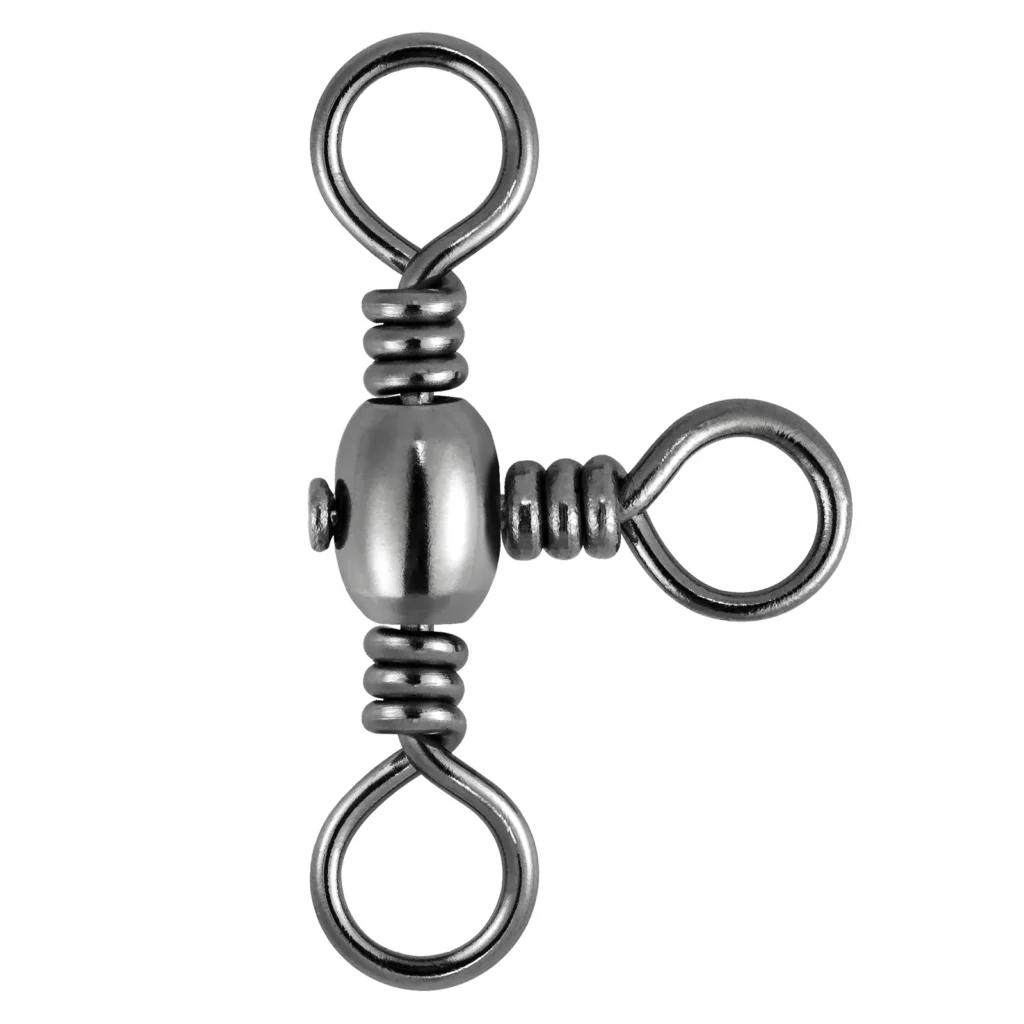
A 3-way fishing rig is an excellent choice for bottom fishing or fishing from the shore in strong currents. It is often used for surf fishing, too.
A 3-way rig is also named a catfish rig since many anglers use it to target this particular species. It is called a 3-way because it features a 3-way swivel that helps keep the baited hook hovering just above the bottom.
How To Tie A 3-Way Rig
- Tie a three-way swivel to your fishing line.
- Next, tie a small piece of the leader line to one of the three eyes on your swivel. Choose a reliable knot.
- Attach a pyramid sinker to this short leader.
- Connect a bit longer piece of a leader line to one of the remaining eyes.
- Tie your hook to the longest leader and bait it as you wish.
Two-Hook Bottom Rig
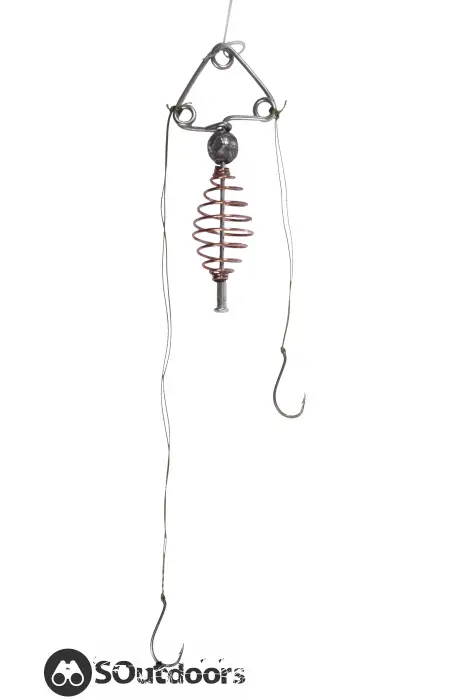
Why have one hook when you can have two? A two-hook or spreader rig is one of the most versatile fishing rigs used to target a variety of fish – from tiny panfish to hefty grouper. You do not have to bother to make it on your own, simply buy a pre-made one in a tackle store.
How To Tie A Two-Hook Bottom Rig
- Cut a piece of 30 – 50-pound test mono line (about arm’s length).
- Next, tie four two-inch loop knots about four inches apart.
- Attach two hooks onto the two upper loops.
- Tie a sinker onto the lowest loop.
- Finally, connect the main line to the topmost loop. Use a reliable fishing knot.
Extra Tip:
You can try adding a spinner blade or some flashy beads to your two-hook bottom fishing rigs to attract more fish.
Popping Cork Fishing Rig

As its name suggests, a popping cork rig contains a piece of terminal tackle known as a popping cork (available in most tackle stores). It is a simple gadget made of a small, hard piece of wire pushed through a cork, and a few beads.
The purpose of a popping cork rig is to create a luring sound and attract fish at some distance from your bait. To make these sounds, you must snap the fishing rod tip up and down, and the beads will do the rest.
A popping cork is an ideal choice when there are active bait fish around. It is one of the best fishing rigs for targeting trout and redfish.
How To Set Up A Popping Cork Fishing Rig
- Use a Non-slip Loop Knot to tie the popping cork to your fishing line.
- Tie a three feet long leader line to the other end of the popping cork. You can make it longer if you’re fishing in deeper waters. The goal is to get the bait just above the bottom.
Watch the video below to find out more about tying a popping cork:
Useful Tips To Help You Choose & Set Up A Fishing Line
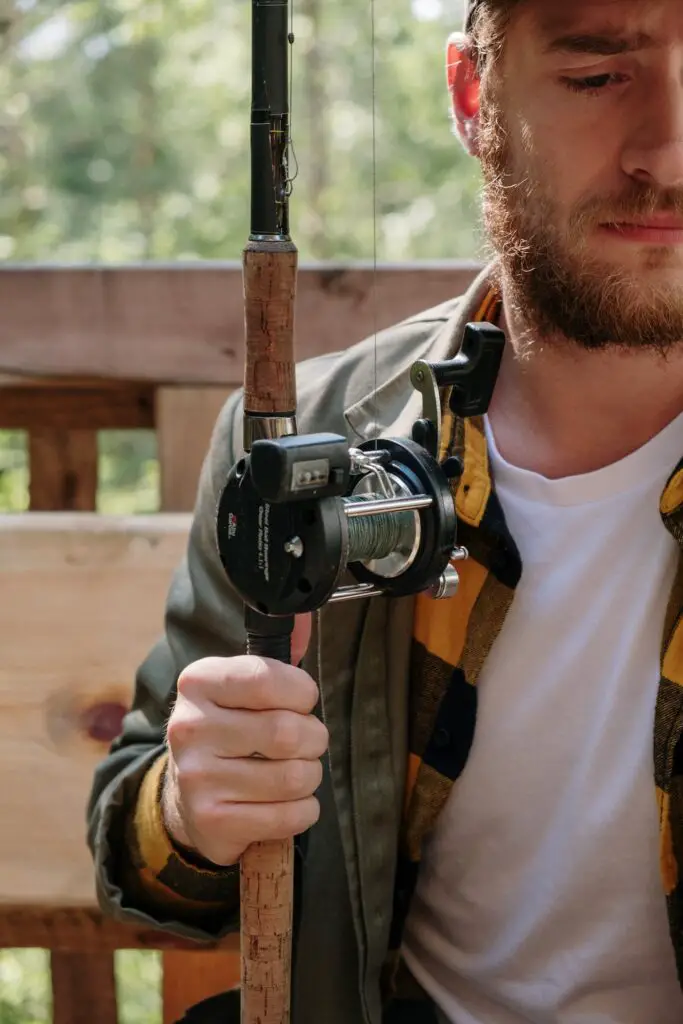
- It is always better to choose a stronger line to eliminate the risk of breakage. Every line loses about a third of its strength when tied into a knot, so ensure your knot can handle the weight of the fish you catch.
- Ensure you use the right knot when connecting the leader and your terminal tackle. It helps avoid line breakage. Most rigs work well with standard fishing knots, such as the Improved Clinch Knot or the Uni Knot.
- The more aggressive and fast the targeted fish are, the stronger the line (and fishing rods) should be. So, if you aim to catch a super-fast 20-pound Dorado, use at least a 30-pound test line.
- If you opt for a heavier line, use a heavier fishing rod as well. A heavy line might break your fishing rod.
- There are many specialty fishing rigs designed for specific fishing situations. It is impossible to learn all the rigs, but you can always browse the internet or ask a more experienced angler to help you out when deciding which rig to use.
For example, the video below shows some rigs that are used with fly fishing rods – exclusively for fly fishing:
FAQs
Does the weight go above or below the hook?
The weight goes above the hook. Typically, it is positioned about 20- to 24-inches up from the hook. The role of the sinker is to keep your bait suspended vertically and prevent it from getting swept away by the current.
Why use a swivel on a fishing line?
Use a swivel on a fishing line to prevent tangles. The swivel connects two sections of your line and enables them to rotate independently. As a result, if some twists form while you cast or retrieve your bait, they will unwind on their own.
Final Thoughts
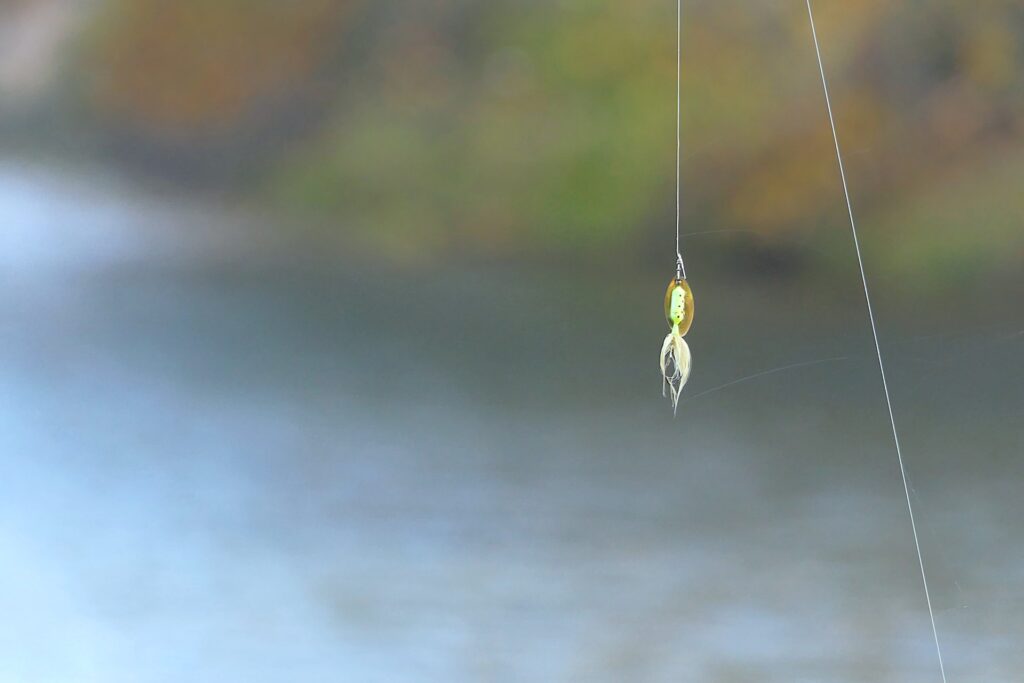
A choice of different types of fishing rods and rigs is often overwhelming for a beginner angler. Luckily, no one expects you to master everything at once. You now know how to set up fishing rigs that are used most commonly, and that means you are ready to cast and catch fish. In time, you’ll learn all the rigging methods you need to know to be a successful angler.
If you need some additional info or want to share some fishing tips with us, feel free to use the comment section.
